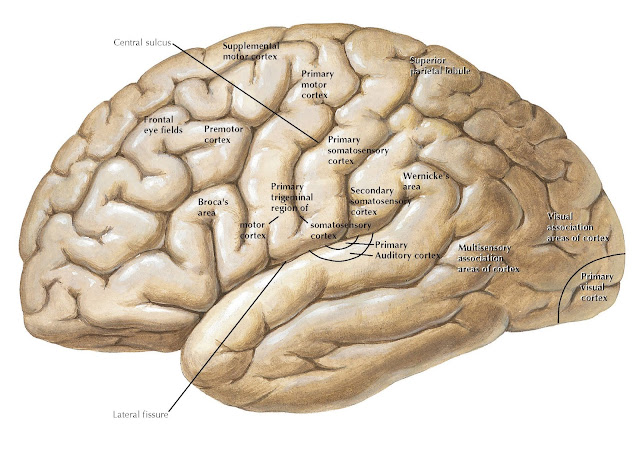LATERAL
VIEW OF THE FOREBRAIN: FUNCTIONAL REGIONS
Some circumscribed
regions of the cerebral hemisphere are associated with specific functional
activities, including the motor cortex, the supplemental and premotor cortices,
the frontal eye fields, the primary sensory cortex, and other association
regions of the sensory cortex. Part of the auditory cortex is visible at the
inferior edge of the lateral fissure (the transverse temporal gyrus of Heschl).
Part of the visual cortex is visible at the occipital pole. Language areas of
the left hemisphere include Broca’s area (expressive language) and Wernicke’s
area (receptive language). Damage to these cortical regions results in loss of
specific functional capabilities. There is some overlap between functional
areas and named gyri (e.g., the motor cortex and the precentral gyrus), but
there is no absolute concordance.
CLINICAL POINT
Some specific regions
(gyri) of the cerebral cortex, such as the precentral gyrus (primary motor
cortex) and the postcentral gyrus (primary somatosensory cortex), demonstrate
topographic organization. Thus, information from the contralateral hand and arm
are localized laterally, the body is represented more medially, and the lower
extremity is represented along the midline and over the edge into the
paracentral lobule. The face and head are represented in far lateral regions of
these gyri, just above the lateral fissure. This has important functional
implications; damage to selected regions such as the midline territory, which
is supplied with blood from the anterior cerebral artery, results in
somatosensory loss and paresis in the contralateral lower extremity, while sparing
the upper extremity.





